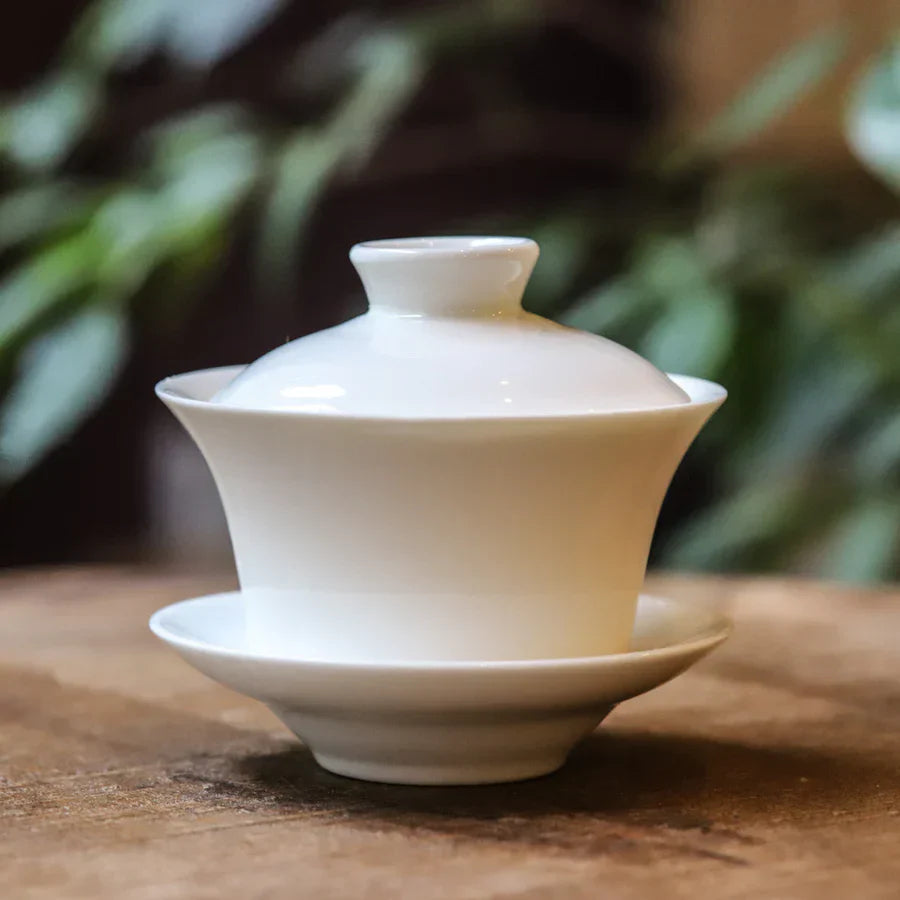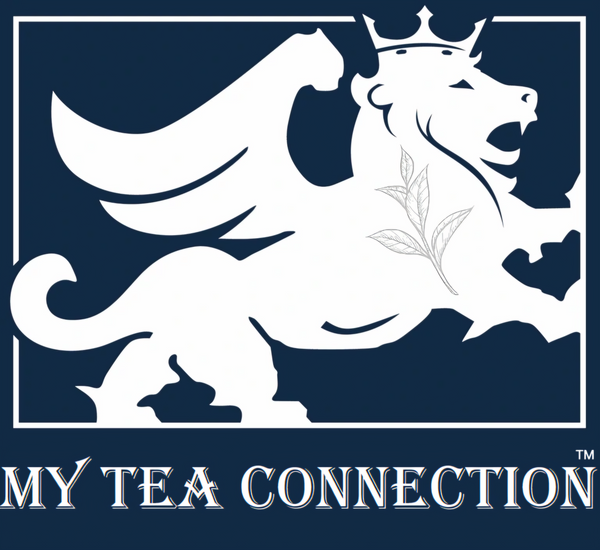
The Gaiwan: The only piece of teaware you need!
The Gaiwan (盖碗), translating to "lidded bowl," is one of the most significant brewing vessels in Chinese tea culture. Used for centuries, the gaiwan exemplifies elegance, versatility, and functionality in the art of tea preparation. While simple in appearance—a bowl, a lid, and a saucer—it offers a profound brewing experience that maximizes control, flavor extraction, and appreciation of tea aesthetics. This article explores the gaiwan from an expert’s perspective, delving into its historical evolution, material considerations, design variations, brewing techniques, and its role in different tea traditions.
Historical Evolution of the Gaiwan
The origins of the gaiwan date back to the Ming Dynasty (1368–1644), a period that saw a shift from powdered tea (as used in Song Dynasty whisking methods) to loose-leaf brewing. This change necessitated a vessel that could accommodate direct steeping, leading to the emergence of the gaiwan as a preferred tool for infusing and drinking tea. Initially popular in Sichuan province, the gaiwan became widespread throughout China and evolved in form and material, adapting to regional tea cultures and brewing preferences.
By the Qing Dynasty (1644–1912), the gaiwan had firmly established itself as an essential component of Chinese tea preparation, particularly in gongfu cha (工夫茶), the meticulous brewing method that emphasizes precision and multiple short infusions. The Qing emperors were known to favor fine porcelain gaiwans, setting trends that influenced both literati and commoners.
Anatomy and Material Considerations
A traditional gaiwan consists of three main components:
- The Bowl (碗, wǎn) – Holds the tea leaves and water, allowing full expansion of the leaves.
- The Lid (盖, gài) – Regulates heat retention and acts as a strainer when pouring.
- The Saucer (托, tuō) – Provides a base for stability and prevents heat from transferring to the drinker’s hands.
Materials and Their Influence on Brewing
Different materials impact how a gaiwan retains heat, affects the flavor, and interacts with various types of tea.
- Porcelain: The most versatile material, offering a neutral surface that does not absorb flavors. Ideal for most teas, especially green, white, and oolong teas, as it preserves delicate aromatics.
- Glass: Provides visual enjoyment of tea leaves unfurling, making it perfect for delicate teas like Longjing (Dragon Well) green tea and silver needle white tea. However, glass does not retain heat well, making it less suitable for teas requiring high temperatures.
- Yixing Clay (Zisha, 紫砂): Porous clay absorbs tea oils over time, enhancing flavor with repeated use. Best suited for aged pu-erh, Wuyi rock oolongs, and darker teas. A Yixing gaiwan should be dedicated to one type of tea.
- Jian Zhan (Tenmoku): A rarer choice, but some prefer its aesthetics and heat retention properties.
Types and Sizes of Gaiwans
Gaiwans come in various sizes, typically ranging from 60 ml to 200 ml. A 100-120 ml gaiwan is considered the ideal size for gongfu cha, allowing for controlled steeping and multiple infusions.
The shape also influences brewing:
- Flared-rim Gaiwan: Easier to handle without burning fingers, disperses heat faster.
- Deep-bowl Gaiwan: Retains heat better, ideal for oolong and pu-erh teas.
- Straight-sided Gaiwan: Offers precise pouring but requires more skill to hold without burning.
Mastering the Art of Brewing with a Gaiwan
Step-by-Step Brewing Guide
- Preheat the Gaiwan – Pour hot water into the gaiwan and swirl it around to ensure even heat distribution. Discard the water.
- Add Tea Leaves – Use approximately 5 grams of loose-leaf tea for a standard 100-120 ml gaiwan. Adjust according to tea type.
- First Rinse (for Certain Teas) – Pour hot water over the leaves and quickly discard the rinse. This step is crucial for pu-erh, oolong, and dark teas to awaken the leaves.
- Steeping – Pour hot water (adjust temperature and steeping duration to your preference) and cover with the lid. Steeping time varies:
- Green/White Teas: 80–85°C, 10–30 seconds
- Oolong Teas: 90–95°C, 10–15 seconds
- Black/Pu-erh Teas: 95–100°C, 10–20 seconds
- Decanting – Hold the lid slightly ajar and pour the liquor into a fairness cup (gong dao bei, 公道杯) to ensure an even distribution of flavors before serving.
- Multiple Infusions – Repeat steps with gradually increasing steep times, maximizing the tea’s complexity.
Pouring Techniques
- Underhand Grip: Holding the gaiwan with the thumb on the lid and fingers on the base, tilting slightly to pour tea while keeping leaves inside.
- Dual Wield: Decant two gaiwans simultaneously!
- Overhand Grip: Using thumb and middle finger on the rim, with the index finger resting on the lid, a traditional gongfu cha method.
The Role of the Gaiwan in Tea Culture
Gaiwan vs. Teapot: When to Use Each
- A gaiwan provides greater control over infusion times and leaf expansion, making it preferable for delicate teas and a good choice for most teas.
- Teapots, especially Yixing clay, retain heat better and are better suited for aged, fermented teas.
Regional Tea Traditions and the Gaiwan
- Sichuan Province: The birthplace of the gaiwan, commonly used for sipping directly from the bowl.
- Guangdong & Fujian (Gongfu Cha): The gaiwan is central in gongfu brewing for oolong and dark teas.
- Beijing & Northern China: Larger gaiwans used as individual tea-drinking vessels.
Caring for a Gaiwan
- Rinse Immediately – Prevents tea stains and residue buildup.
- Avoid Soap – Hot water is usually sufficient to clean porcelain or glass. Yixing gaiwans should never be washed with soap.
- Dry Thoroughly – Prevents moisture retention that could lead to mold.
Conclusion
The gaiwan is more than just a brewing vessel; it embodies the harmony, patience, and skill essential in tea culture. From its historical roots in the Ming Dynasty to its integral role in gongfu cha, the gaiwan remains a timeless tool for both beginners and seasoned tea enthusiasts. Mastering the use of a gaiwan opens the door to a deeper appreciation of tea, offering unparalleled control over the brewing process and enhancing the sensory experience of each infusion. Whether used for delicate green teas, complex oolongs, or aged pu-erhs, the gaiwan stands as a testament to the art of tea, refined over centuries.
